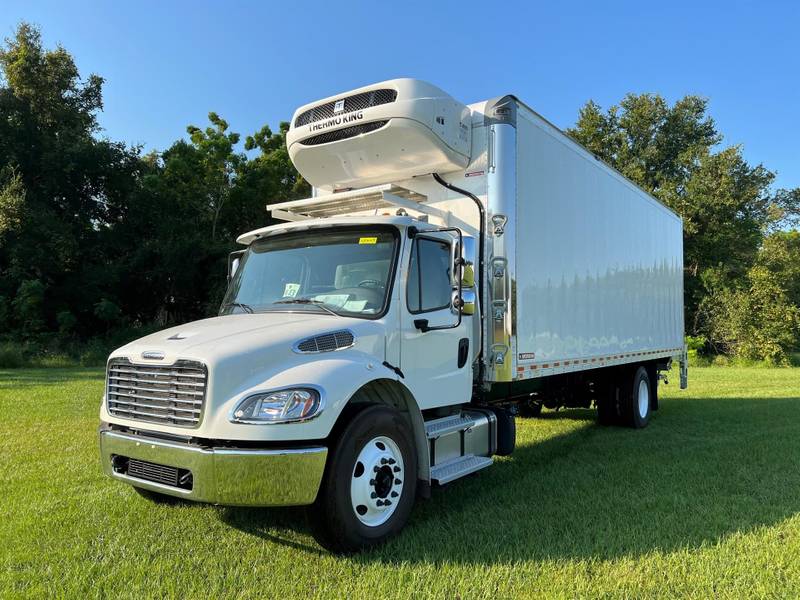Non Cdl Trucks For Sale – Whether it’s vintage clothing, antique furniture, or used luxury watches, second-hand goods offer an opportunity for buyers to find quality items that are no longer available in stores. Acquiring an established business can provide a head start in terms of customer relationships, operational systems, and brand recognition. Moreover, buying second-hand items allows consumers to access unique and vintage products that may no longer be available in stores, offering a sense of individuality that is often missing from mass-produced, new items. Overpricing an item can lead to it sitting unsold, while underpricing it can result in lost potential revenue. While buying and selling second-hand items can come with its challenges, the rewards—both financially and environmentally—make it a worthwhile pursuit for many people. Electronics are another category of second-hand goods that have seen a rise in popularity. Vintage clothing, in particular, has gained a significant following, with people seeking out unique, one-of-a-kind pieces that cannot be found in mainstream stores. Online platforms such as eBay, Craigslist, and Facebook Marketplace have made it easier than ever for individuals to sell their unwanted items to a global audience. People place their belongings for sale for many reasons. Additionally, purchasing second-hand electronics can be a way to access high-end models at a lower price. The most obvious benefit is the cost savings. The first and most obvious reason is the tangible benefits they offer. Yet, despite this shift, the appeal of quality craftsmanship has not waned. Technological advancements and shifts in consumer behavior can also impact the types of businesses that buyers are interested in. In some cases, it’s not just objects that are for sale, but entire industries or institutions. When someone buys a second-hand item, whether it’s a piece of furniture passed down through generations or a retro jacket from a bygone era, they are not just acquiring an object; they are connecting to a story, a memory, or a cultural moment. But in the end, whether it’s an item or an individual, the process of being “for sale” is a negotiation of worth, a moment of exchange. From online platforms to local thrift stores, second-hand goods offer an opportunity for consumers to access unique products, save money, and reduce their environmental footprint. The advent of these online platforms means that consumers can hunt for items they might have otherwise overlooked or been unaware of, sometimes at a fraction of the original cost. The perceived high cost of these items has led some to opt for cheaper alternatives.

18,900 2006 intenational 4300 26 ft box truck non cdl for sale in Mesa
Lane departure warningrear view cameraandroid auto3rd row seat

2022 Freightliner M2 Extended Cab (For Sale) 26' Non CDL 14016
Lane departure warningrear view cameraandroid auto3rd row seat

2019 Hino 268 (noncdl) 26' Box Truck for Sale (New) YouTube
Lane departure warningrear view cameraandroid auto3rd row seat

2023 Freightliner M2 106 For Sale Refrigerated Van Non CDL UG1296
Lane departure warningrear view cameraandroid auto3rd row seat

NonCDL Titan Truck VacCon
Lane departure warningrear view cameraandroid auto3rd row seat

2017 Hino 268A For Sale Box Truck Non CDL 30NS64433
Lane departure warningrear view cameraandroid auto3rd row seat
2004 Freightliner M2 Non CDL Mechanics Truck for Sale
Lane departure warningrear view cameraandroid auto3rd row seat

GMC Topkick Single Axle Dump NonCDL used for sale
Lane departure warningrear view cameraandroid auto3rd row seat

2011 International 4300 (For Sale) Flatbed Non CDL 17675P
Lane departure warningrear view cameraandroid auto3rd row seat

2020 International MV607 Box Truck Dry Box Van Delivery moving
Lane departure warningrear view cameraandroid auto3rd row seat
Whether it’s the sleek lines of a designer chair or the intricate patterns on a handwoven rug, quality goods are often as much about aesthetics as they are about functionality. The idea of “everything for sale” challenges our understanding of what is sacred, what is essential, and what is truly priceless. For sellers, online platforms can expand their reach to a global audience of potential buyers, increasing the chances of finding the right match for their business. While many artists and creators are forced to sell their work in order to make a living, there is still a sense of purity in the act of creation. When you look at something marked as “for sale,” you’re not only seeing an item; you’re seeing the possibility of a change, whether it’s the beginning of a new ownership, the end of a relationship with an object, or simply the result of a decision to move forward. It implies that there’s nothing off-limits, nothing beyond the reach of commerce. Through online marketplaces and platforms, small businesses and independent creators can sell their goods to a global audience. Despite the many advantages of buying and selling second-hand goods, there are some challenges that both buyers and sellers must navigate. The struggle is not in resisting the marketplace entirely, but in finding balance, in ensuring that the things that truly matter cannot be bought, sold, or traded. In this sense, quality is not just about prestige; it’s about making thoughtful choices that contribute to a more sustainable and rewarding lifestyle. With the rise of e-commerce, the accessibility of quality goods for sale has expanded exponentially. Many people continue to resist the notion that everything has a price, and they fight to reclaim what is meaningful and valuable in life. For some, it’s a matter of balancing budgetary constraints with their desire for quality. This sense of connection can also extend to the broader culture of quality goods, where consumers and creators share a commitment to excellence and a desire to preserve the craft and tradition behind these products. The concept of quality, however, is not a one-size-fits-all. It involves an in-depth understanding of the business’s financials, operations, and market position. Additionally, trends in sustainability and eco-conscious living have contributed to the growth of the second-hand market, as consumers become more aware of the environmental impact of their purchasing decisions. But the financial aspect is only one part of the equation. Art, music, literature — these expressions of human creativity and emotion are not always bound by the rules of commerce. The rise of minimalism and a desire for unique, vintage items has also played a role in the growing popularity of second-hand goods.
For fashion-conscious individuals, buying second-hand is a way to express their personal style while also supporting sustainable practices. The practice of buying and selling second-hand items has been around for centuries, but in recent years, it has seen a resurgence. Sometimes, a sale can feel like the closing of one chapter and the opening of another. The story behind the item becomes part of its value, adding an emotional dimension to its physical form. In addition to individual sales, online marketplaces often feature businesses and professional sellers who specialize in second-hand goods, providing buyers with a curated selection of high-quality items. For the buyer, a car offers freedom, mobility, and a chance to create their own story on the road. But is this a reflection of reality? Or is it an illusion we’ve created, an idea we’ve accepted in order to make sense of a world that increasingly revolves around consumption and profit?
At the core of this idea lies the assumption that everything, no matter how unique or rare, can be exchanged. For book lovers, buying second-hand books is an affordable way to build a library, and it can also be an opportunity to find rare or out-of-print titles that are no longer available in stores. In some cases, sellers may be willing to offer financing options, where they agree to receive payment over time, which can make the business more attractive to potential buyers. While buying and selling second-hand items can come with its challenges, the rewards—both financially and environmentally—make it a worthwhile pursuit for many people. What will come next? What new opportunities will arise from this decision? When an item is placed “for sale,” it’s not just the object that’s changing hands; it’s often a reflection of the personal changes happening within the seller. In times of financial hardship, such as during recessions or periods of high unemployment, more people may turn to second-hand goods as a way to save money. A car is something that can hold a great deal of sentimental value. Manufacturing new items requires energy, raw materials, and natural resources, all of which contribute to environmental degradation. One of the primary reasons people turn to second-hand goods for sale is financial. Overpricing an item can lead to it sitting unsold, while underpricing it can result in lost potential revenue. Online marketplaces have opened up opportunities for people to buy and sell goods from the comfort of their own homes. Online platforms also give buyers and sellers the chance to evaluate one another through reviews and ratings, adding an extra layer of trust and security to the transaction. This practice is an essential aspect of sustainability, as it helps conserve resources and reduces the amount of waste sent to landfills. Whether buying vintage clothing, upcycled furniture, or pre-owned electronics, the growing popularity of second-hand shopping reflects a broader desire for more sustainable, creative, and conscious ways of living.